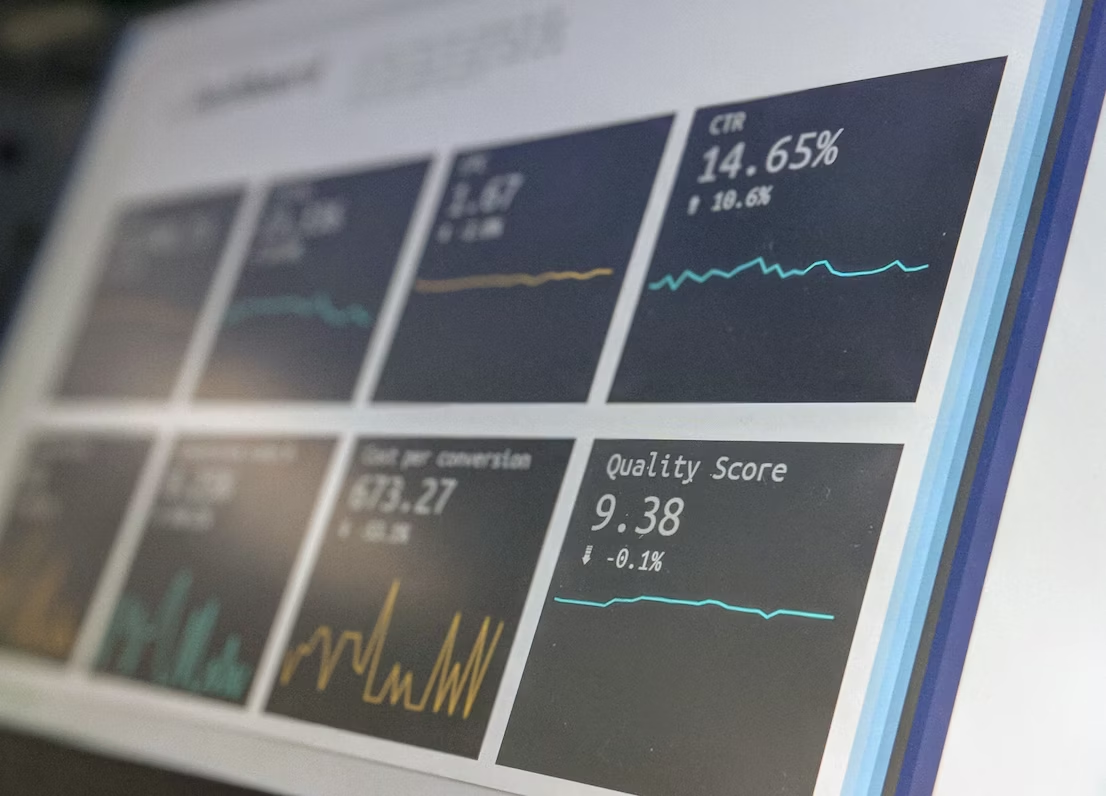Defining Dramatic Irony
Dramatic irony is a narrative device where the audience holds critical knowledge that the characters in the story lack. This disparity between awareness creates tension and draws the viewer deeper into the plot.
In dramatic irony, there is a contradiction between what characters think is happening and what the audience knows is really going on. For example, in Shakespeare's Romeo and Juliet, the audience knows that Juliet has faked her own death, but Romeo believes she is truly dead. This creates a tragic irony as events unfold.
Though “dramatic” hails from theater, this technique is equally effective in novels, short stories, and films. The audience's privileged perspective fueled by dramatic irony deepens engagement, allowing them to sense impending consequences before the characters do.
There are three main types of dramatic irony:
- Tragic irony - When the audience knows something dreadful is looming ahead for an oblivious character. This builds apprehension.
- Comic irony - When a character is unaware of the humor in their speech or situation, but the audience is amused. This elicits laughter.
- Situational irony - When there is a contradiction between what is expected to happen and what actually happens. The characters are unaware of the ironic contradictions.
By leveraging dramatic irony, writers allow the audience to experience events on a deeper, more engaging level. The technique ultimately highlights the separation between a character's limited perspective and the broader truths the audience can grasp.

Use of Dramatic Irony in Greek Tragedy
Dramatic irony is a useful tool for writers to create anticipation and suspense. By providing the audience with knowledge that the characters lack, a sense of anticipation builds as the audience waits to see when the characters will discover the truth. This engages the audience and keeps them invested in the unfolding story.
Dramatic irony also reveals character motivations and flaws. When the audience understands more than the characters, they gain deeper insight into what motivates them. This allows the writer to subtly develop the characters by revealing their ignorance, hubris, or other shortcomings. The gap between what the audience knows and what the characters know builds dramatic tension and interest.
Overall, dramatic irony powerfully engages the audience by making them privileged observers. They watch with bated breath, waiting for the pivotal moment when a character will stumble upon the truth that the audience already knows. This technique builds empathy for the characters and investment in the narrative arc. Skillful use of dramatic irony allows writers to craft gripping stories full of revelations and surprise.
Examples of Dramatic Irony in Theater
Dramatic irony has been used extensively in theater, especially in classic Greek and Shakespearean tragedies. Some of the most famous examples include:
Oedipus Rex - In Sophocles' ancient Greek tragedy, Oedipus seeks to find the murderer of the previous King Laius, unaware that Oedipus himself killed the king. The audience knows the tragic truth that Oedipus is unaware of, creating dramatic irony.
Romeo and Juliet - One of the most iconic uses of dramatic irony is in Shakespeare's Romeo and Juliet. The audience knows the lovers will die, while the characters themselves are unaware of their fate. Throughout the play there are many moments where if the characters knew what the audience knew, the tragic ending could have been avoided.
A Doll's House - In Henrik Ibsen's 1879 play, Nora lives a seemingly happy domestic life, unaware that it is all about to shatter. The audience can see the façade and know her marriage is built on deceit. Dramatic irony builds as Nora remains oblivious until the climactic ending.
Death of a Salesman - Similarly, in Arthur Miller's 1949 play, tragic hero Willy Loman is unaware of the reality of his life and descends into madness. The audience can clearly see his delusions, creating increasing dramatic irony leading to his tragic suicide.

The Role of Audience in Dramatic Irony
Grasping how the audience fits into the equation is key to really getting dramatic irony. In a lot of ways, the audience becomes like an invisible character in the story, knowing things that the characters themselves don't. This insider info doesn't just keep viewers hooked; it turns them into observers and co-conspirators, eagerly waiting for that dramatic shoe to drop.
One of the cool things about dramatic irony is how it builds a tight bond between the audience and the story. When viewers know something that the characters don't, they're not just watching—they're involved. It's like the playwright has let them in on a secret, making them feel special and more invested in what's happening.
This setup also ramps up empathy and tension. As you see characters stumbling around in the dark, making choices without all the facts, it hits differently because you know what's coming. This can stir up a range of emotions, from frustration to hope to outright dread. Think about how much more powerful "Oedipus Rex" or "Romeo and Juliet" feels when you’re aware of the tragic fates awaiting the characters. You can't help but feel for them even more.
By giving the audience this kind of inside scoop, playwrights can play with their emotions and expectations in really effective ways. It makes the story more engaging and prompts viewers to think more deeply about the themes and moral issues at play.
In a nutshell, the audience is a vital part of what makes dramatic irony work. Their extra knowledge cranks up the suspense and emotional payoff, making the whole experience richer and more intense. This clever interplay between what the audience knows and what the characters don't is what keeps dramatic irony a powerful storytelling tool.
Dramatic Irony in Script Analysis
Dramatic irony is a key tool used in script analysis to identify pivotal moments in a play's plot and dialogue. As a refresher, dramatic irony relies on the audience knowing something important that the characters do not. This creates an engaging dynamic where the audience feels informed, involved, and even sympathetic towards certain characters.
When analyzing a script, a dramaturg or director should look for key instances of dramatic irony and think critically about how they function in the overall story. For example, examine moments where a character makes a pivotal decision but lacks a critical piece of information that the audience possesses. This sets up a cause and effect chain where the audience recognizes the mistake before it unfolds. Other examples include misunderstandings, secrets, prophecies, and more.
To fully leverage dramatic irony in analysis, focus on both sides of the knowledge gap - what the character knows and, importantly, what the audience knows that they don't. Consider how this informs the audience's view of the character's words and actions. Track how the irony builds tension and suspense as the audience waits for the moment of realization. Look for patterns on how information is revealed over the course of the play.
Understanding dramatic irony ultimately helps unpack subtext, foreshadowing, and the emotional stakes of key scenes. It also reveals how the playwright skillfully manipulates the audience's knowledge to tell a compelling story. With this technique in your toolkit, your script analysis and staging will fully utilize one of drama's most powerful tools.
Dramatic Irony in Character Development
Dramatic irony isn't just about making the plot juicy; it's also a great tool for fleshing out characters. When characters have no clue about something the audience already knows, it highlights different sides of their personalities and motivations.
Take Othello from Shakespeare's play, for example. We know that Iago’s a two-faced schemer way before Othello figures it out. This creates a stronger picture of Othello as a trusting guy, but also shows his vulnerability to jealousy and manipulation. It’s hard not to feel for him when the truth finally dawns on him.
Or think about Elizabeth Proctor in Arthur Miller's "The Crucible." Early on, she comes off as a bit rigid and moralistic. But by the end, after everything's gone down, her ability to forgive and truly understand her husband, John, feels way more impactful. Knowing John’s inner struggle and ultimate choice to come clean makes us appreciate Elizabeth’s change even more.
Even characters who seem straightforward benefit from dramatic irony. Take "The Odyssey" by Homer. We know Odysseus is in disguise as a beggar when he gets back home. This twist lets us see his smarts, patience, and emotional depth in a new light, especially during his interactions with family and enemies.
Dramatic irony can also load simple dialogue and actions with extra meaning, making characters more relatable and complex. Look at Elizabeth Bennet in Jane Austen's "Pride and Prejudice." Her mistaken view of Mr. Darcy adds layers to her character, revealing her biases and paving the way for her self-growth.
Using dramatic irony to flesh out characters makes the audience feel more connected to them. This storytelling trick turns characters into multi-dimensional people with journeys that offer deeper insights and emotions.

Directing with Dramatic Irony
Dramatic irony can be a powerful tool for directors to use in building suspense and engaging the audience. When directing scenes with dramatic irony, the director may need to work closely with the actors to ensure the delivery highlights the gap in awareness between the character and the audience. Coaching actors on things like tone, facial expressions, and subtext can help underline the dramatic irony.
The director can use dramatic irony to create rising tension and anticipation in the audience. Since the audience knows something major is coming that the character does not, each interaction and conversation takes on heightened importance. The director may choose to draw out certain scenes to build the suspense, while moving quickly through others. Using techniques like lighting, music, and editing, the director can further emphasize the ominous tone.
Overall, dramatic irony allows the director to consciously manipulate the audience's emotions and engagement. As Alfred Hitchcock demonstrated in his thriller films, the awareness disparity of dramatic irony can captivate an audience and keep them on the edge of their seats. The director must balance building suspense with eventual plot development for maximum impact. As author John Vorhaus notes, "dramatic irony works best when deployed sparingly, as a spice rather than a staple".

Dramatic Irony in Tragedy vs. Comedy
Dramatic irony can be used to heighten the tragic effect in tragedies or create situational humor in comedies. In tragedies, dramatic irony builds suspense and foreshadows disaster as the audience knows something terrible is about to happen that the character does not. This creates a feeling of anxiety and helplessness in the audience as they wait for the tragic moment to arrive. For example, in Romeo and Juliet when Romeo believes Juliet is dead but the audience knows she has only taken a sleeping potion.
In comedies, dramatic irony is often used to create amusing situations where the character is unaware of something the audience knows. This builds anticipation for the moment the truth will be revealed to the character and allows the audience to feel "in" on the joke. For example, in Much Ado About Nothing when Benedick and Beatrice are tricked into believing the other is in love with them but the audience knows it is a ruse. Dramatic irony lightens the tone in comedies through situational humor and funny misunderstandings.
Overall, dramatic irony serves to intensify the emotions of a scene, whether it be heightening the tragedy in serious plays or eliciting laughs in comedic ones. The audience's knowledge advantage allows them to experience either suspense and empathy or amusement and lightheartedness. Dramatic irony is thus a useful tool for playwrights in creating engaging theatrical moments and connecting the audience to the work.
Dramatic Irony in Shakespeare
William Shakespeare masterfully used dramatic irony throughout many of his plays to build suspense, humor, and insight into his characters. Dramatic irony occurs when the audience knows something that the characters do not. Shakespeare cleverly crafted scenes where the dramatic irony heightens the tension or adds an element of humor as the audience waits for the characters to gain awareness.
In tragedies like Romeo and Juliet, Shakespeare utilized dramatic irony to foreshadow the doomed fate of the young lovers. The prologue reveals their impulsive relationship will end in death, so the audience anxiously anticipates how the tragedy will unfold. When Romeo believes Juliet is dead, the audience knows she merely feigns death from a sleeping potion. Shakespeare builds apprehension knowing Romeo will unwittingly kill himself beside his beloved, still living, wife.
In Hamlet, Shakespeare thickened the plot by allowing the audience in on the secret that Hamlet's uncle Claudius murdered Hamlet's father. This knowledge amplifies the irony when Claudius calls Hamlet mad for accusing him of murder. The dramatic irony creates a moment of dark humor while accentuating Claudius' deception and Hamlet’s sanity.
Another comedic example arises in Twelfth Night when the pompous Malvolio preens over a fake love letter written as a prank. The audience delights knowing Malvolio falls victim to dramatic irony by misreading signals from Olivia who never sent the letter at all.
Shakespeare strategically crafted dramatic irony to allow the audience to read between the lines. By giving the audience insider knowledge, he engaged them deeply in the unfolding story and revealed profound insights into the essence of his characters.
Challenges of Dramatic Irony
One of the key challenges when using dramatic irony is pacing the revelations and information provided to the audience versus the characters. If too much is revealed too soon, it can diminish the intended suspense and surprise. Playwrights and directors must find the right balance, revealing just enough to build intrigue without giving everything away prematurely.
Related to pacing, it can also be difficult to properly balance suspense and surprise. The audience knows something the characters don't, but that knowledge should optimally create tension and interest rather than telegraph all upcoming events. Skilled dramatists unveil information incrementally, escalating stakes while preserving uncertainty.
Maintaining believability can also pose challenges when relying heavily on dramatic irony. If revelations contradict established facts or strain credulity, the intended effect may fall flat. Playwrights must ensure logical consistency even as they selectively reveal information to the audience ahead of characters.
Overall, dramatic irony is a powerful device, but requires thoughtful application to maximize its impact. Knowing too little or too much at the wrong time can undermine key elements like suspense, surprise, and believability that make dramatic irony effective when done well.
Dramatic Irony and Audience Engagement
Dramatic irony is a powerful technique for drawing the audience into a story and allowing them to connect emotionally with the characters. When the audience knows something that the characters do not, it creates a sense of empathy and anticipation as the audience waits for the moment when the character will gain the same knowledge.
Playwrights leverage dramatic irony to build tension and allow the audience to emotionally engage with the character's limited perspective. The empathy created through dramatic irony leads to greater emotional investment and ultimately catharsis when the character gains awareness. As the Dabble Writer notes, dramatic irony can create "delightfully unbearable suspense" as the audience waits for the a-ha moment.
Dramatic irony is also a useful technique for creating situational humor and inviting the audience to laugh knowingly at a character's ignorance. Used skillfully, the disconnect between what the audience knows and what the character knows can highlight absurdities for comedic effect.
Overall, dramatic irony is a powerful tool for directors and playwrights seeking to fully immerse the audience in the story. By leveraging the audience's insider knowledge, dramatic irony makes the audience a participant in the narrative rather than just a passive observer. The empathy and anticipation it creates allows the story to resonate emotionally with the audience.
Dramatic Irony in Modern Theater
Dramatic irony continues to be an important literary device in contemporary theater. Playwrights utilize dramatic irony in diverse stories and settings to build suspense, highlight themes, and engage the audience.
For example, Tom Stoppard's play Rosencrantz and Guildenstern Are Dead incorporates dramatic irony by having the title characters exist on the periphery of Shakespeare's Hamlet, unaware of the larger tragedy unfolding around them. The audience's knowledge of Hamlet allows them to appreciate the irony of Rosencrantz and Guildenstern's limited perspective.
Dramatic irony has also been used in non-traditional and experimental plays. Samuel Beckett, a leader in the Theater of the Absurd movement, frequently employed dramatic irony to highlight the meaningless nature of human existence. In Waiting for Godot, the characters perpetually wait for someone who never arrives, but only the audience recognizes the existential irony of their situation.
Playwrights continue finding innovative applications for dramatic irony that subvert expectations and reveal essential truths. By activating the audience as informed observers, dramatic irony remains an impactful tool in contemporary theater.
Directing with Dramatic Irony
Directors can utilize dramatic irony to great effect in their productions. Some best practices include:
- Carefully analyze the script to identify all instances of dramatic irony. Look for gaps between what the audience knows versus what the characters know.
- In rehearsals, make sure the actors understand when their character is unaware of key information. Have them play those moments sincerely rather than wink at the audience.
- Use staging to heighten dramatic irony. Position characters so their lack of knowledge is emphasized. For example, place a character upstage when they deliver an ironic line, unaware of crucial action happening downstage.
- Exploit pauses and delivery for maximum ironic impact. An well-timed pause after an unknowingly ironic line can be very powerful.
- Consider sound and lighting cues to underscore significant ironic moments. A sudden dramatic shift in music or lighting when a character makes an ironic pronouncement can heighten the effect.
- Analyze each ironic moment to determine if it builds suspense, creates humor, develops character, or serves another purpose. Tailor the delivery and staging accordingly.
- Avoid overplaying irony too often. Allow some ironic lines to slip by unemphasized so the biggest moments land with maximum force.
With careful script analysis and creative staging, directors can use dramatic irony to deliver emotionally impactful, humorous, and surprising moments for their audience. Keeping the focus on illuminating character and situation rather than just irony itself will ensure the most powerful results.
Criticisms and Alternatives
Dramatic irony has faced some criticisms over the years. Some argue that it manipulates audiences by creating an imbalance of knowledge between the audience and characters. By having insider information, audiences may feel superior to characters in an unnatural way. Others argue dramatic irony makes plot twists and surprises too predictable, since the audience is waiting for the characters to catch up to what they already know.
However, many argue dramatic irony does not need to be manipulative if used thoughtfully. Playwrights can create empathy for characters rather than condescension. Surprises can also still delight audiences even if some dramatic irony is used, through clever twists, misdirection, and reveals.
Some alternatives to traditional dramatic irony include having unreliable narrators, using situational irony, or structuring plays so audiences discover information along with characters. Dramatic irony remains a powerful technique for engagement, but writers should consider criticisms and alternatives to prevent manipulation or predictability. Moderation and intentionality with its use can maximize dramatic irony's strengths while minimizing weaknesses.
Related Literary Devices
Dramatic irony is often used in conjunction with other literary devices that also play with the expectations of the audience.
Foreshadowing
Foreshadowing provides hints or clues about events that will occur later in the story. Dramatic irony depends on the audience having knowledge of upcoming events that the characters lack. Foreshadowing helps provide the audience with this knowledge, setting up the dramatic irony. The playwright skillfully uses foreshadowing to plant seeds about future events, allowing dramatic irony to bloom at the opportune moment. For more on foreshadowing, see this overview.
Situational Irony
Situational irony occurs when the actual outcome of events fails to match reasonable expectations. In dramatic irony, the audience alone holds the reasonable expectation of what should occur based on their greater knowledge of circumstances. The ignorant characters remain oblivious and are surprised when outcomes contradict their faulty assumptions. Both situational and dramatic irony harvest the gap between ignorance and knowledge for literary effect. For more on situational irony, refer to this guide.
Verbal Irony
Verbal irony is when words are used to convey the opposite of their literal meaning. For instance, a character may say "I'm so happy about this disastrous news" when they are clearly dismayed. The literal meaning of the words contrasts sharply with the actual sentiment behind them. Dramatic irony depends on the audience understanding the underlying truth behind what characters are saying. Verbal irony can complement dramatic irony by revealing the disconnect between what characters know and what the audience knows. For more on verbal irony, check out this page.
Understanding Different Forms of Irony
When studying irony in literature and drama, it helps to distinguish between each form of irony and how it functions within a story. The most commonly discussed type of irony is dramatic irony, where the audience knows more than the characters, creating tension or humor until the characters learn the truth. By contrast, situational irony occurs when the outcome of events is the opposite of what is expected—catching both audience and characters by surprise.
Another useful comparison is dramatic irony vs. situational irony. While both rely on a gap between expectation and reality, dramatic irony thrives on a knowledge imbalance between audience and characters, whereas situational irony emerges from unexpected twists that surprise everyone involved.
A third distinction is dramatic irony vs. verbal irony. Verbal irony occurs when a speaker says one thing but means another—often for sarcasm or wit. Dramatic irony, however, is not about wordplay but about withheld knowledge, allowing the audience to anticipate the moment when characters finally confront the hidden truth.
By carefully layering these forms of irony, writers can enrich storytelling, sustain suspense, and deliver powerful emotional payoffs.
Conclusion
Dramatic irony is a crucial literary device for dramaturgs and theater directors to understand. As discussed throughout this article, dramatic irony occurs when the audience understands something about present or future circumstances that a character does not.
Proper use of dramatic irony provides audiences with insights not available to characters, building suspense, engagement, and potentially empathy. Master dramaturgs and directors utilize dramatic irony to highlight character flaws, foreshadow events, and allow the audience to feel involvement in the narrative.
Key points covered include:
- Dramatic irony derives its power from the disconnect between what characters know and what the audience knows. Skilled playwrights create this disconnect intentionally to produce intended effects.
- In tragedies, dramatic irony typically foreshadows doom for characters. In comedies, it sets up amusing contradictions. Genre conventions influence how irony gets deployed.
- Analyzing dramatic irony during script analysis provides insights into characters, relationships, plot, and theme. This allows directors to heighten intended effects.
- Dramatic irony requires engagement from the audience to have meaning. Directors must foster conditions for the audience to actively process dramatic irony.
- Overuse of dramatic irony can make plots predictable. Mastery comes from judicious and purposeful use of the technique.
By thoroughly understanding dramatic irony, dramaturgs and directors can utilize this key technique to enhance storytelling, character development, audience engagement, and the overall impact of a production. Insight into dramatic irony leads to more informed script analysis and directorial choices.
Bonus:










